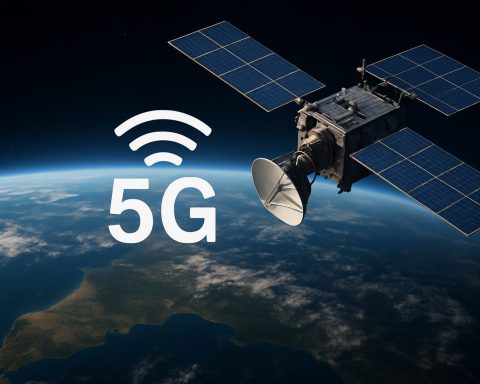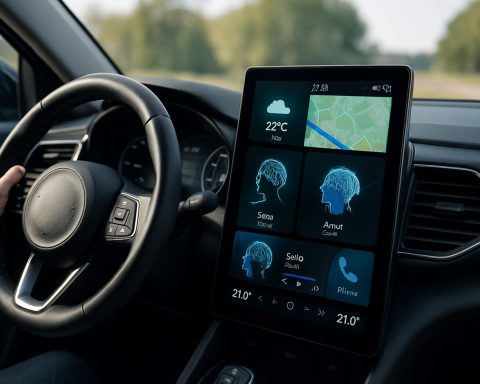- Nissan introduces e-Power technology, blending electric and gasoline engines for a fully electric driving feel—without the need to plug in and charge.
- Unlike traditional hybrids like the Prius, e-Power cars use the gasoline engine solely to charge the battery, ensuring smooth, silent operation with simple refueling.
- Facing $4.5 billion in losses, Nissan accelerates innovation while cutting jobs and consolidating operations to stay competitive in global markets.
- e-Power is expanding beyond Japan and Europe, aiming to capture American drivers seeking electric performance and convenience.
- Rivals struggle to match Nissan’s hybrid–electric integration at this scale; engineering efforts now focus on solid-state batteries for future advancements.
- Despite financial struggles and industry speculation, Nissan’s forward-looking strategy signals a bold attempt to lead the evolving automotive landscape.
Vast concrete test tracks snake through the outskirts of Yokosuka, where Nissan’s latest gamble hums quietly against a backdrop of industry unease. There, the automaker unveils its revitalized vision—a fleet powered by “e-Power,” aiming to reverse billions in losses and redefine the road ahead.
Underneath the familiar sheet metal, a secret pulses: e-Power’s design never asks drivers to stop and charge. Instead, Nissan’s system stitches together the best of electric and gasoline engines—without any of the hassle of plug-in routines. The gasoline engine charges a battery, feeding a powerful electric motor that whirrs to life with every press of the pedal. The result? Each trip feels like piloting an electric car, smooth, silent, and responsive, yet always ready to refuel at any corner gas station.
This approach isn’t just a technical tweak; it’s a philosophical break from the back-and-forth symphony of Toyota’s Prius. Where the Prius juggles motors and engines during the drive, e-Power cars run exclusively on the battery. The gasoline engine hums in the background, an unseen stagehand making sure the performance never falters.
Nissan’s urgency crackles with every executive briefing. Reeling from a staggering $4.5 billion loss last year, the company faces fierce headwinds—economic fallout, industry-wide chip shortages, and trade tension that stalks Asian markets like a shadow. Drastic moves follow suit: 20,000 jobs cut, seven auto plants shuttered. Leadership, now steered by Ivan Espinosa, sharpens its focus: innovate, partner, and deliver to the world’s largest car markets.
The Nissan Leaf, once a harbinger of EV dreams, has shown the company’s daring. Now, e-Power expands on that legacy, appearing across popular models in Europe and Japan, with its next big act set for the American market—where hybrids and electrics battle for dominance and drivers covet convenience above all.
Few rivals offer a similar package. Suzuki dabbles in this space, but no major competitor has matched Nissan’s scale or ambition in marrying gasoline and electric power so seamlessly. Meanwhile, Nissan’s engineering teams double down on the future—racing to develop solid-state batteries, whispered to be game-changers with faster charging and better range, promising to upend entire swaths of the automotive industry.
Industry analysts, however, voice concern. Nissan’s war chest dwindles. Mergers and partnerships are rumored—talks with Honda fizzled, but the company signals it’s still open for business. Even Nissan’s iconic Yokohama headquarters sits at the center of swirling speculation about asset sell-offs or dramatic reinventions.
The key message is unmistakable: Nissan is betting its future on innovation that bridges today’s expectations with tomorrow’s demands. For drivers, it means choices that are both practical and exhilarating—electric-car smoothness without the charging headaches. For the industry, it’s a signal that the race for the car of tomorrow is still wide open—and anyone willing to rewrite the rules could come out ahead.
Nissan’s e-Power Revolution: Why This ‘No-Charge’ Hybrid Could Upend the Auto Industry
Nissan e-Power System: Beyond Range Anxiety and Into Real-World Driving
Nissan’s bold launch of its e-Power models, famously tested on the snaking tracks of Yokosuka, marks a radical shift in the automotive landscape. While the source article captured the headline-grabbing features and corporate urgency, there’s much more to the e-Power narrative that’s shaking up Nissan—and the broader hybrid and electric vehicle (EV) market.
Below, discover under-the-hood facts, expert perspectives, hands-on how-tos, and actionable insights to help you decide if e-Power is the right choice.
—
What Makes Nissan e-Power Different? (Key Features & Specs)
– Series Hybrid Configuration: Unlike typical parallel hybrids (like Toyota Prius), Nissan’s e-Power is a true series hybrid. The gasoline engine doesn’t directly drive the wheels—it only acts as a generator to charge the battery, which then drives the electric motor. This means the car always drives electrically.
– No Plug-In Required: There’s no need to plug in and charge e-Power cars. The gasoline engine maintains battery levels, so refueling is as fast and convenient as traditional vehicles—appealing for those lacking home charging infrastructure.
– Electric-Like Performance: Instant torque, smooth acceleration, and near-silent operation are identical to a pure EV experience. Nissan claims e-Power offers better fuel economy than conventional models without range anxiety ([source](https://www.nissan-global.com)).
– Model Range & Launches: e-Power debuted in Japan (notably on the Note and Serena), expanded in Europe, and is now aimed for global rollouts, including plans for the US. Expect to see e-Power options in crossovers and potentially compact SUVs.
—
How-To Steps: Driving & Maintaining an e-Power Vehicle
1. Refuel Like a Regular Gas Car: No specialized charging needed. Fill up at any gas station.
2. Maximize Efficiency: Use Eco mode in city driving. Nissan’s regenerative braking (one-pedal driving) recaptures energy, further extending range.
3. Regular Maintenance: Fewer moving parts in the drive system compared to conventional cars means less maintenance. However, standard engine checks are still required.
—
Real-World Use Cases & Life Hacks
– Urban Commuters: Perfect where home charging is impractical or apartments lack charging points.
– Long-Distance Drivers: Enjoy electric feel with the ability to drive hundreds of miles—just refuel in minutes.
– Fleet and Taxi Services: Reduced urban emissions, less idling noise, and significant fuel savings over time.
—
e-Power vs. the Competition: Reviews & Comparisons
– Toyota Hybrid Synergy Drive: While efficient, Toyota’s parallel hybrid system splits driving between gas and electric motors. Nissan’s e-Power always delivers power from the electric motor, for a more consistent EV feel.
– Plug-In Hybrids (PHEVs): PHEVs can run on grid electricity for short distances but require charging infrastructure. e-Power doesn’t.
– Traditional ICE Vehicles: e-Power offers much better urban fuel economy and lower emissions.
See more on Nissan’s technology and product lineup at the official Nissan global website.
—
Industry Trends, Market Forecasts & Expert Opinions
– Hybrid Market Surge: The global hybrid vehicle market is projected to reach $438 billion by 2027, with demand especially strong in regions where charging infrastructure lags ([Mordor Intelligence](https://www.mordorintelligence.com)).
– Solid-State Battery Race: Nissan has signaled advancements in solid-state batteries, expected to drastically improve charging times, range, and safety. If successful, this could set a new industry standard and further differentiate Nissan.
– Competitor Moves: Honda, still wavering on series hybrids, may re-enter discussions with Nissan for technology sharing as Western automakers ramp up EV (and hybrid) rollouts.
—
Controversies & Limitations
– Emissions Still Present: While more efficient, e-Power vehicles do emit CO2 as the gas engine is onboard. They’re not zero emissions.
– Complexity vs. Cost: The tech is more complicated—and potentially pricier to manufacture and repair—than basic hybrids.
– Market Confusion: As a “full hybrid” without a plug, some customers might mistake e-Power for a mild hybrid, despite it delivering a pure EV drive experience.
—
Security & Sustainability
– Sustainable Sourcing: Nissan is increasingly committed to green manufacturing processes, including battery recycling and ethical material sourcing.
– Cybersecurity: Modern e-Power systems support over-the-air updates and connected services—Nissan is investing in cybersecurity protections.
—
Frequently Asked Questions (With Expert Answers)
Does e-Power save money over a regular car?
Yes. Owners typically report better city fuel economy (up to 30% greater) and reduced brake wear due to regenerative braking ([Car and Driver](https://www.caranddriver.com)).
Can e-Power run on pure electricity?
No. Unlike a full EV, the gas engine is always required for battery charging—there’s no external charging port.
What’s the environmental impact?
e-Power reduces urban pollution and greenhouse gases compared to standard gas cars, but is not fully emission-free like EVs.
—
Pros & Cons Overview
Pros:
– EV-like instant acceleration and quietness
– No charging station required
– Better fuel efficiency than conventional vehicles
Cons:
– Still dependent on gasoline
– Higher initial cost versus basic hybrids/ICE
– Not a perfect solution for zero-emission mandates in some regions
—
Quick Tips & Actionable Recommendations
1. Test Drive an e-Power Model: Experience the EV-like drive—most buyers notice the difference instantly.
2. Compare Local Incentives: In some regions, hybrids (including non-plug-ins) qualify for tax breaks or incentives that can offset higher upfront costs.
3. Monitor Charging Infrastructure: If your area lacks public charging, e-Power can bridge the gap until EV chargers become mainstream.
4. Watch Industry Moves: If solid-state batteries hit the market in the next 2–3 years, consider waiting for the next leap in Nissan’s lineup.
—
The Bottom Line
Nissan’s e-Power cars represent a savvy blend of electrification and practicality, offering near-EV performance with none of the charging headaches. As the hybrid market expands and solid-state batteries loom on the horizon, Nissan’s innovation could reshape what drivers expect from future mobility. For those not ready (or able) to go fully electric, e-Power is a compelling—and strategic—alternative.
For more on electric and hybrid advancements, visit the Nissan global homepage.









